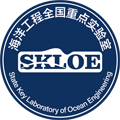Open Question
Benchmark Test 202001 - Benchmark study on wave run-ups of four square vertical columns
2020-09-07
Benchmark Test Program
Title: Benchmark study on wave run-ups of four square vertical columns
Organizer: State Key Laboratory of Ocean Engineering, China
Test No.: 202001
1. Background
Numerical simulation has been more and more essential in both academic and industry of Naval Architecture and Ocean Engineering as a powerful tool. The numerical methods have been developed rapidly and there are numerous state-of-the-art computational resources in China. However, the numerical methodologies and their reliabilities face many new challenges because of various scientific and technical issues related to offshore innovations, complicated environmental interactions, etc.
The nonlinear interactions of extreme waves and large-volume offshore platforms exhibit complicated wave run-up mechanisms. The phenomena consist of local wave run-up owing to wave diffraction and radiation, the interface between columns and pontoons, the upwelling and water jet on the column surface. The complicated wave-column interaction may lead to negative air gap and wave impact events, and result in damage to the structures of offshore platforms.
2. Objectives
In order to improve the understanding of wave run-ups and air gaps and develop relevant prediction models, the present benchmark study is carried out by model tests and back-to-back CFD simulations with different methods, in consideration of regular waves with various periods and steepness. The numerical and experimental results will be compared to examine the accuracy of different numerical models and provide reliable basis for developing prediction models and understanding the mechanism.
3. Contents
The object of the benchmark study is the fixed four square surface-piercing vertical columns. The wave run-up benchmark study is organized by the State Key Laboratory of Ocean Engineering (SKLOE). The model particulars, wave parameters and data sampling are described in the benchmark test specifications in detail.
4. Test specifications
The primary objective of the test program is to measure the wave run-up heights on a fixed four-squared-column system under regular waves and provide a set of benchmark results for analyzing the influence of wave parameters and validating related numerical simulations.
(1) Modelling
The specific gravity of seawater is γ_w=1.025. One configuration of fixed four-truncated-square-cylinder system is considered, as illustrated in Figure 1, in which the particulars are: half column breadth is a=0.16 m; half column spacing is b=0.68 m; fillet radius of all columns is 0.06 m; height of all columns is 0.8 m; constant draft is 0.4 m.

Figure 1 Experimental set-up of four square vertical columns
(2)Wave parameters
The deep water is considered and the water depth of the towing tank is 7.5m. The length and width of the tank are 300 m and 16 m, respectively. Two wave directions are considered: 0^∘ and 45^∘. The regular wave parameters in model scale are listed in Table 1, where H is wave height, T is wave period, λ is wave length, k is wave number, and a is half column breadth.
Table 1 Wave parameters (model scale)

(3) Wave probes
As shown in Figure 1, there are totally 29 wave probes for measuring the wave elevations and wave run-ups:
- three sets of wave probes, a1¬–a4, b1–b4, c1¬–c4, are located adjacent to the right fore-column, where a1, b1 and c1 are on the column surface;
- three sets of wave probes, d1¬–d4, e1–e4, f1¬–f4, are located adjacent to the left aft-column, where d1, e1 and f1 are on the column surface;
- wave probes g, i, j, k are located in the middle between two columns;
- wave probe h is located at the center.
The spacing between adjacent wave probes is listed in Table 2.
Table 2 The spacing of wave probes (model scale)

5. Participants
Any organizations and researchers who are willing to participate in the benchmark study are welcome to complete the numerical simulations independently based on the test specifications. The numerical results and relevant information of adopted numerical method and software are expected to be submitted to Prof. Longfei XIAO (Email: xiaolf@sjtu.edu.cn) in SKLOE before Dec. 31, 2020.
All the numerical results will be compared with the benchmark test results and the comparisons will be publically published in the website of SKLOE and the Journal of Ocean Engineering and Science.
The participants can publish articles on the basis of the numerical and experimental data with acknowledgement of SKLOE as “ The test data set come from Benchmark test study at State Key Laboratory of Ocean Engineering (No. 202001) in China .“ The non-academic applications of the data need to be formally approved by SKLOE.
6. Announcement
The invitation of participating in the benchmark study will be announced in the website of SKLOE and Journal of Ocean Engineering and Science.
The results of the benchmark study will be published in the website of SKLOE and in Journal of Ocean Engineering and Science as a paper.


